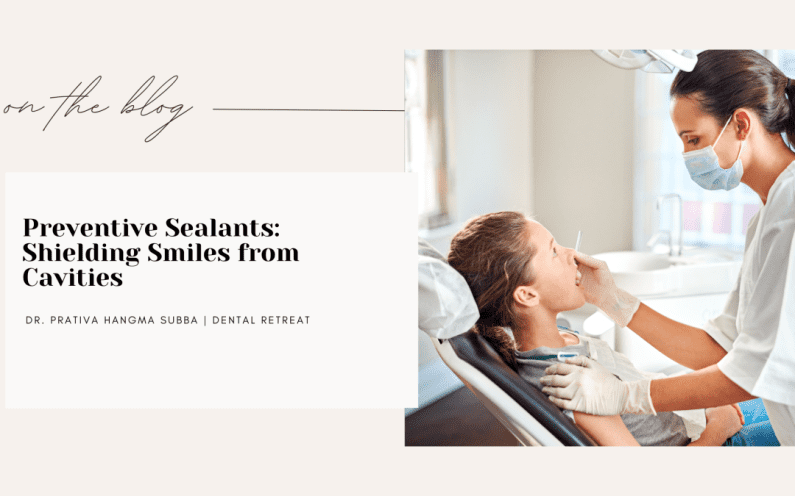Introduction
Preventive sealants are a cornerstone of modern dental care, designed to protect teeth from decay before it starts. This minimally invasive treatment is especially effective for children and teenagers but also benefits adults prone to cavities. In this article, we will explore the importance of preventive sealants, their application process, and their role in the broader context of Minimally Invasive Dentistry.
We will also discuss how sealants complement advanced techniques like Air Abrasion Dentistry, ICON Resin Infiltration, and Minimally Invasive Dental Implants to create a comprehensive preventive care plan.
What Are Preventive Sealants?
Preventive sealants are thin, protective coatings applied to the chewing surfaces of the back teeth (molars and premolars). These areas are most vulnerable to decay due to deep grooves and pits where food particles and bacteria accumulate. The sealant acts as a barrier, preventing plaque and acids from causing cavities.
How Do Preventive Sealants Work?
- Barrier Protection:
- Sealants create a smooth surface over the tooth’s grooves, making it difficult for bacteria and food particles to adhere.
- Early Intervention:
- They are most effective when applied soon after the molars erupt, typically around ages 6 and 12.
- Complementary Care:
- Sealants work in tandem with good oral hygiene and fluoride treatments for comprehensive protection.
The Science Behind Preventive Sealants
Sealants are usually made of resin-based or glass ionomer materials, both of which offer:
- Durability: Can last up to 10 years with proper care.
- Fluoride Release: Some sealants release fluoride over time, enhancing enamel strength.
- Transparency: Allowing dentists to monitor the tooth surface underneath.
Benefits of Preventive Sealants
- Prevention of Cavities:
- Reduces the risk of decay by 80% in molars.
- Cost-Effective:
- A preventive sealant is far cheaper than fillings, crowns, or root canals.
- Minimally Invasive:
- Requires no drilling or removal of tooth structure.
- Safe and Painless:
- A non-invasive procedure suitable for all age groups.
- Enhances Dental Health:
- Reduces the risk of complex dental issues in the future.
Who Should Get Preventive Sealants?
- Children and Teens: Ideal candidates, as sealants protect newly erupted molars.
- Adults: Beneficial for those with a history of cavities or deep grooves in teeth.
- High-Risk Patients: Individuals prone to dental decay, including those with dry mouth or orthodontic appliances.
The Procedure: Application of Preventive Sealants
The application of sealants is a quick, painless process that involves the following steps:
- Cleaning:
- The tooth surface is cleaned and dried to ensure proper adhesion.
- Etching:
- A mild acidic solution is applied to roughen the surface, enhancing the sealant bond.
- Application:
- The sealant material is applied to the grooves and pits of the tooth.
- Curing:
- A special curing light is used to harden the sealant.
- Evaluation:
- The dentist checks the sealant for smoothness and proper coverage.
Sealants in Minimally Invasive Dentistry
Preventive sealants are a key component of Minimally Invasive Dentistry, prioritizing preservation over intervention.
- Air Abrasion Dentistry:
- Air Abrasion Dentistry can prepare the tooth surface for sealant application without drilling.
- ICON Resin Infiltration:
- For early-stage cavities, ICON Resin Infiltration can be combined with sealants for enhanced protection.
- Laser Dentistry:
- Laser Dentistry ensures a bacteria-free surface before sealant application, maximizing longevity.
Sealants vs. Other Preventive Techniques
| Feature | Sealants | Fluoride Treatments | ICON Resin Infiltration |
|---|---|---|---|
| Primary Use | Prevent cavities in grooves | Strengthen enamel | Treat early-stage cavities |
| Invasiveness | Non-invasive | Non-invasive | Minimally invasive |
| Longevity | 5-10 years | Months | Permanent for treated lesions |
| Best For | Children, teens, adults | All ages | Early decay in children and adults |
Maintaining Preventive Sealants
- Oral Hygiene:
- Brush and floss regularly to prevent decay around the sealant.
- Regular Check-Ups:
- Dentists can inspect the sealants for wear and reapply them if necessary.
- Avoid Hard Foods:
- Limit chewing on hard items like ice to prevent damage.
Challenges and Myths About Sealants
Myth 1: Sealants Are Only for Kids
Sealants benefit adults, especially those with deep grooves or a history of cavities.
Myth 2: Sealants Replace Brushing and Flossing
While protective, sealants are no substitute for good oral hygiene.
Challenge: Cost Accessibility
While affordable in the long run, the upfront cost may deter some patients without insurance coverage.
Future of Preventive Sealants
- Nanotechnology:
- Sealants infused with nanoparticles for enhanced durability and antibacterial properties.
- Smart Materials:
- Development of materials that release fluoride and calcium ions on demand.
- AI Integration:
- Artificial intelligence to predict decay-prone areas for targeted sealant application.
Why Choose Preventive Sealants?
Preventive sealants offer a simple, effective, and minimally invasive solution for maintaining dental health. They are a vital tool in modern dentistry, especially when combined with techniques like Laser Dentistry and Digital Smile Design for a holistic approach.
For a comprehensive understanding of advanced dental care, visit our Blog page on Minimally Invasive Dentistry and related techniques such as Silver Diamine Fluoride (SDF) and Ultra-Thin Veneers.
Conclusion
Preventive sealants are an essential part of a proactive dental care routine, providing long-term protection against cavities with minimal effort. As a cornerstone of Minimally Invasive Dentistry, sealants empower patients to maintain healthy smiles with less invasive treatments.
Looking to safeguard your teeth or your child’s? Talk to your dentist today about incorporating preventive sealants into your oral care plan.
